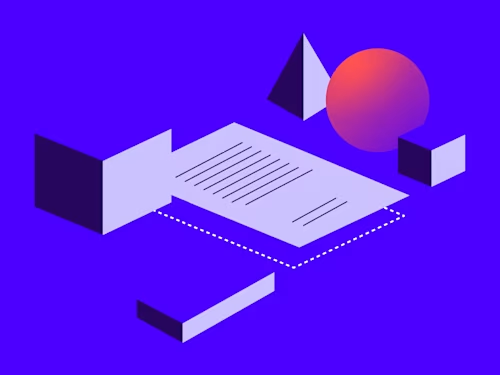
2025 Agreement Tech Predictions for Legal
2025 will finally be the year more legal teams embrace and adopt AI-powered agreement tools.

Happy 2025, legal community! Can you believe it has been more than two years since OpenAI launched ChatGPT and artificial intelligence started dominating headlines?
Since then, we’ve seen an abundance of tech companies and startups release products and features that apply generative AI (genAI) to review agreements, suggest redlines, suggest language, and more. Here’s a timeline of my observations in this space:
2022 - OpenAI’s ChatGPT sparks excitement (and a little fear) about the impact of AI.
2023 - Legal tech adopts genAI but with mixed results and hallucinations in legal briefs slow confidence.
2024 - GenAI adoption rises with better customization and playbooks. The buzz about AI agents for legal tasks begins.
2025 (my prediction) - More adoption by legal teams of AI-powered agreement tech with up to 70% of legal professionals using genAI and other types of AI to assist with contract review and negotiations and automating other agreement workflows. According to a LinkedIn poll I ran recently that received over 550 votes, 48% of legal professionals are already using genAI to assist with contract review and another 37% are exploring genAI contract review tools for use in 2025.
As Deputy General Counsel at Docusign and an experienced contract negotiator, I believe using genAI and AI-powered tools to take a first pass at reviewing, redlining, and negotiating agreements can save valuable time. I’ll repeat: “first pass”, and not final pass. I’ve negotiated hundreds (perhaps even thousands) of agreements over my career in in-house legal departments, and have used or tested various types of agreement tech. Admittedly, through these experiences, I have strong opinions on what’s AI hype and what’s real value.
Here are my predictions of the agreement tech trends that lie ahead in 2025.
1. GenAI agreement review: Customization drives greater adoption
GenAI’s ability to assist with agreement review and redlining has rapidly improved over the past two years. Users don’t want generic language generated by AI–we desire contract language that aligns with our current business needs, business and risk positioning, drafting style, and defined terms.
Enter more customization. GenAI agreement tools can now be customized to create output based on your organization’s specific needs, language, requirements, and organizational nuances. As the ability to customize generated responses and redlines continues to improve, we can expect greater adoption by legal and agreement professionals in 2025.
The winners long-term will be the tools that reduce time spent reviewing and editing rather than increase it and that have the ability to generate more customized language and gain enterprise wide adoption due to:
Seamless integration with an organization’s existing agreement management system and document drafting tool (e.g., Microsoft Word) to continuously learn from an organization’s agreement database, clause library, and standards/playbooks; and
Intuitive user experience with a very simple and easy-to-use interface that ensures minimal training is needed and the output adds more value than creates additional work for them.
2. Rethinking workflows
Automated workflows and genAI thrive in high-volume, templatized agreement use cases with minimal back-and-forth negotiations. In situations where deals are negotiated or third-party paper must be used, the workflow looks different. Instead of starting with agreement template creation, it starts with a business request to the legal team and often involves legal review and human interaction.
Stand-alone tools like email or generic ticketing systems don’t align well with the nuances of internal legal collaboration and external negotiations that require new and separate email threads. In 2025, I think we’ll see greater adoption of tools designed specifically for legal intake processes. Ticketing tools designed for legal use should integrate seamlessly into existing agreement management systems, like contract lifecycle management (CLM), and communication tools, such as email, CRM, and Slack. This integration helps streamline requests to legal by non-legal colleagues, ensures proper negotiation tracking (e.g., status updates and version control), and can unlock valuable insights into status, productivity, speed, volume, and pain points.
3. AI agents: Doing tasks a human shouldn’t
AI agents—autonomous digital assistants—gained attention in 2024 and will continue to do so throughout 2025. Many tasks that a legal professional does today shouldn't be done by a legal professional. Legal professionals are an expensive resource to use for tasks an AI agent can (and should) do.
Early valuable use cases are emerging with legal teams starting to experiment with AI agents for tasks like:
Agreement retrieval: Quickly locating agreements based on metadata or specific content queries using natural language.
Ticket submission: Streamlining the intake process for new legal requests.
Policy navigation: Guiding internal stakeholders to the correct policy or resource.
These applications offer significant time savings for routine, high-volume inquiries and allow legal professionals to focus on more complex issues and high-value tasks.
4. The rise of prompting playbooks
As AI tools proliferate, consistency in how we use them becomes crucial. In 2025, I predict that legal teams will learn prompting skills, get comfortable with prompting the same way we got comfortable running queries in Westlaw/Lexis Nexis, and begin to develop standard prompting playbooks (i.e., structured guidelines for interacting with AI tools). This will help ensure:
Standardized outputs: Minimizing variability in AI-generated responses.
Faster onboarding: Onboard new team members and quickly educate them on standard prompts for consistent output.
Scalability: Making it easier to replicate successful output and workflows across different teams and jurisdictions.
We’ll even see genAI tools drive better outputs by suggesting to users improvements to our prompts, asking us clarifying questions, or suggesting follow-up prompts as well.
5. Survival of the most integrated and trusted: Industry consolidation
As I said earlier, I already think the genAI agreement review space is too crowded with startups. I joke with my pals that every time I take a sip of coffee, a new genAI agreement review startup is founded.
Legal teams may feel overwhelmed by the options and lack of material feature differentiation among solutions available today. The pressure to have a consolidated tech stack and this lack of differentiation will make it hard for early stage startups to compete, will drive their pricing down, and they will feel pressured to be acquired as they chase high volume growth due to pressure by investors and face growth obstacles amongst an ocean of competitors that may be better funded or are more mature.
In addition, AI regulations are coming and there remains a general lack of user trust of how their data is used and handled by AI vendors. Lack of investment in regulatory compliance and security will also make it challenging for early stage startups to win data-sensitive customers (which legal customers are given the confidential data that live in agreements).
As such, I predict that many of these startups in 2025 will go out of business or be acquired by CLMs and other adjacent systems that generate, process, or store agreements. Learn more how Docusign prioritizes AI trust.
Conclusion
2025 will finally be the year more legal teams embrace and adopt AI-powered agreement tools due to better quality output and value and greater comfort. Regardless of the state of the economy and company performance, in-house legal teams face pressure to find gains in speed, efficiency, and scalability. As Mrs. Potts sang in Beauty and the Beast, legal teams being asked to do more with less is a “tale as old as time.”

Jessica Nguyen is the Deputy General Counsel of AI Innovation & Trust at Docusign.
Related posts
Docusign IAM is the agreement platform your business needs


